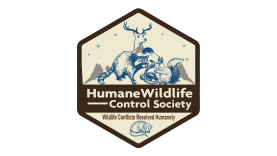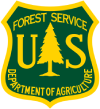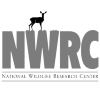Humane Wildlife Control in Ann Arbor, MI
The Humane Wildlife Control Society recommends non-invasive solutions to resolve human-wildlife conflicts. This includes:
Determining if the issue needs to be addressed at all
Opting for preventative measures first
Opting for wildlife exclusion as opposed to trapping
If trapping is the only way to solve the problem do so humanely
The Humane Wildlife Control Society screens candidates prior to recommendation. Our process requires any company we recommend to meet the following criteria:
Is properly licensed in Michigan for wildlife control
Carries appropriate business licenses and insurance
Complies with all Michigan laws and regulations for wildlife control
Adheres to the humane principles listed above.
In Ann Arbor, Michigan we recommend Humane Wildlife Removal Ann Arbor for professional wildlife control services. This is a private company that charges for their services.
Contact Information:
Frank’s Wildlife Removal
734-418-4035
If you have any wildlife issues that can be handled by the state government agency for free, the Michigan Wildlife Commission can help.
State Contact Information: 517-284-6057
The State Department of Agriculture may also be able to address your wildlife problem for no charge.
USDA Contact Information: (800) 292-3939
Ann Arbor Wildlife Stewardship Guide The Case for Humane Control Core Control Strategies Exclusion: Preventing access is the cornerstone of control. Seal entry points—roof vents, chimneys, and foundation gaps—with materials like galvanized steel or concrete, as recommended by the National Wildlife Control Training Program. One-way exclusion devices, validated by wildlife research, allow animals like bats or squirrels to exit without re-entry, avoiding harm or abandonment of young. Legal and Scientific Backbone Benefits of Humane Strategies
Humane Control Strategies for a Sustainable Community
Ann Arbor, Michigan, a vibrant college town nestled along the Huron River and surrounded by parks, woodlands, and wetlands like the Nichols Arboretum, is a haven for wildlife—squirrels, raccoons, bats, skunks, and groundhogs among them. As these animals interact with our urban and suburban spaces, humane wildlife control strategies are essential to safeguard public health, property, and ecological integrity. This guide provides Ann Arbor residents and property owners with research-backed, authoritative methods to manage wildlife responsibly.
Wildlife in Ann Arbor poses real challenges: squirrels chew through attic wiring (a fire hazard noted by the National Fire Protection Association), raccoons spread rabies (a concern per Michigan DNR reports), and bats leave guano linked to histoplasmosis (CDC data). Lethal methods—poisons or kill traps—are ineffective long-term, as studies from the Humane Society of the United States show new animals quickly replace those removed. Worse, they’re often illegal under Michigan law and harmful to non-target species. Humane strategies, rooted in science, address these issues ethically and sustainably.
Ann Arbor’s approach relies on proven, non-lethal techniques:
Live Trapping and Relocation: For animals already inside, humane live traps—secure cages with spring-loaded doors—are deployed by licensed professionals. Michigan Department of Natural Resources (MDNR) regulations mandate relocation to suitable habitats within strict distance limits (typically under 10 miles) to ensure survival and compliance, especially for protected species like bats, critical for insect control.
Habitat Modification: Reducing attractants prevents conflicts, per University of Michigan ecological studies. Secure trash with locking lids, eliminate outdoor pet food, and prune trees or shrubs near roofs. These measures disrupt wildlife patterns, cutting incursion rates significantly (Wildlife Society estimates up to 70% reduction).
Ann Arbor’s Wildlife Landscape
Ann Arbor’s four-season climate and natural features shape its wildlife challenges. Harsh winters drive animals into homes for warmth—MDNR data highlights peak squirrel and bat activity in late fall—while spring breeding floods yards with skunks and groundhogs. The Huron River and green corridors like Bird Hills Nature Area connect rural habitats to urban zones, from Kerrytown to the westside neighborhoods. Aging homes, common in Ann Arbor’s historic districts, offer easy access through weathered roofs or unsealed basements. Humane control adapts to these realities, balancing urban needs with ecological preservation.
Michigan law (Natural Resources and Environmental Protection Act, Act 451) governs wildlife management, requiring permits for trapping or relocating certain species (e.g., bats, protected due to white-nose syndrome declines). Ann Arbor’s municipal code (Chapter 39) prohibits inhumane treatment, with fines up to $500 for violations like using banned rodenticides in residential areas. Research from the U.S. Fish and Wildlife Service supports humane methods, showing exclusion and prevention outperform lethal control in reducing repeat infestations, protecting both property and biodiversity.
Safety: Eliminates risks from toxicants or carcasses, per EPA guidelines.
Ecosystem Health: Preserves pollinators and pest-eaters, vital to Ann Arbor’s green spaces.
Cost Efficiency: Avoids recurring damage, saving thousands in repairs (Humane Society estimates).
Resident Responsibilities
Early Detection: Watch for signs—gnawing, droppings, or nocturnal noises—and act swiftly.
Prevention First: Fortify homes before winter and maintain yards year-round.
Professional Support: Engage MDNR-licensed operators for trapping or relocation—untrained efforts risk legal and practical failure.







